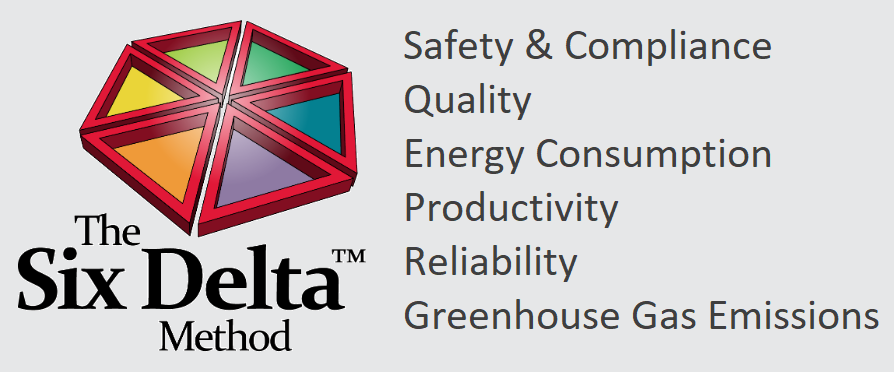Once heat is generated in a furnace, how well that heat is contained obviously has a significant impact on the overall energy efficiency of the combustion process.
Yet in our work with clients, we often find furnaces that have poor insulation and/or openings that allow ingress and egress of unheated air. Air outside the system is cooling the heated air in the system, causing a loss of the available heat that’s been generated, and the hot air is escaping, taking heat with it.
For instance, a small gap around a whole door exhausts hot air at the top of the door and sucks in cold air at the bottom of the door.  Many companies are aware that they’re losing heat, but they don’t realize the full scope of the cost. As long as their energy bill stays fairly constant, it’s accepted as a normal operating cost. They may notice a gap around a door, or a crack in a wall, and pay it little mind, failing to appreciate how small steps to improve containment can lead to significant increases in energy efficiency.
Many companies are aware that they’re losing heat, but they don’t realize the full scope of the cost. As long as their energy bill stays fairly constant, it’s accepted as a normal operating cost. They may notice a gap around a door, or a crack in a wall, and pay it little mind, failing to appreciate how small steps to improve containment can lead to significant increases in energy efficiency.
We also often find companies that aren’t taking full advantage of the appropriate refractory materials and insulation to contain heat by preventing excessive loss through the furnace walls.
What You Can Do
The first step in improving heat containment is measuring the current amount of heat loss. Then causes of that loss, be it poor insulation, inefficient refractory materials, improperly sized or spaced equipment, etc. can be pinpointed and addressed.
When we work with clients, after we identify the causes of inefficient heat containment, these are actions that we typically take to help our clients transfer heat more efficiently within the system:
- Correct any insulation, ingress, egress, or leakage issues.
- Ensure that the triple T’s (temperature, turbulence, and time) are honed for optimum efficiency of heat transfer.
Temperature: The greater the difference between the heating air and the load, the higher the rate of heat transfer and, generally, the greater the efficiency of the transfer.
Turbulence: Increasing the turbulence results in more-frequent wiping away of the relatively stagnant layer of air that forms around the load (i.e., the boundary layer), which is usually the largest barrier to heat transfer.
Time: The higher convection rates that result from increased air temperature and turbulence reduce the time required to heat the product in the furnace.
- Install the best possible combination of insulation and refractory materials to increase containment.
- Implement better air recirculation processes to keep more heat in the system.
- Modify operational and equipment-maintenance procedures as necessary to prevent unnecessary heat loss.
- Use our knowledge of new technologies to evaluate better solutions in all areas of the heat containment process.
We can typically reduce clients’ energy costs by 25%-30%. Ancillary benefits include a reduction in refractory maintenance costs and associated equipment downtime.
Losing heat from a furnace system is a serious problem, and the cost of fixing it is minimal compared to the cost savings and productivity gains possible. In our next blog, we’ll discuss how you can improve energy efficiency by reusing the heat produced by the system.
To learn about improving the heat generation process, check out Money Burning: The Financial Impact of Heat Generation Efficiency.
Image courtesy of Eugen Nosko – Deutsche Fotothek, Creative Commons.


